Volunteers on the A14C2H Summer Community Dig have been unearthing some fascinating and beautiful things that are helping to piece together the past of their area. As the dig enters its final week, we take a look at some of the highlights.
Usually the arrowheads we find in Britain are made of flint, which makes this example – recovered by a volunteer in week 2 – something a little bit special: it appears to be made of shell instead!

Shell only tends to be preserved in specific conditions in the ground (it dissolves in acidic soil), so we are lucky to have this glimpse into the distant prehistoric human activity at the site thanks to its silty clay soil. We think this example is potentially Neolithic, meaning it could be 4500-6000 years old.
Many of the best artefacts have been giving volunteers insight into the residents of the medieval village of Houghton, and the lives they led before they were forced to abandon their homes in the 12th century.
Volunteer Katharine was lucky enough to find two complete pottery vessels lying in-situ, where they had been discarded in a medieval rubbish pit some 800 years before. Archaeologist Beth, who helped Katharine to carefully excavate them, said:
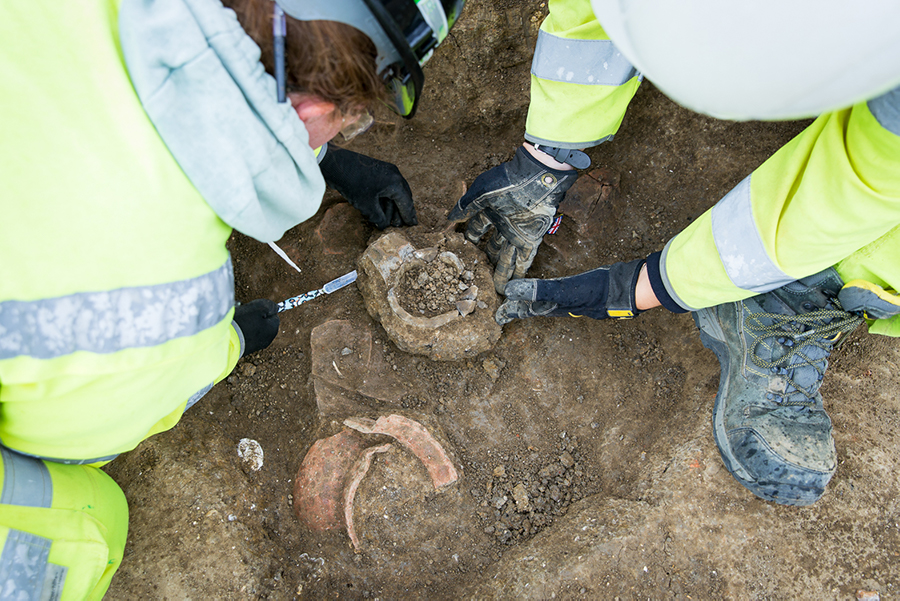
“It was lovely to see the whole jug, complete with a lip and handle”.
MOLA Headland metal detectorist Steve has been helping the team to check the soil we excavate to ensure that nothing is missed, like this lovely copper-alloy bow brooch, which would probably have been worn as an everyday accessory by a medieval villager:
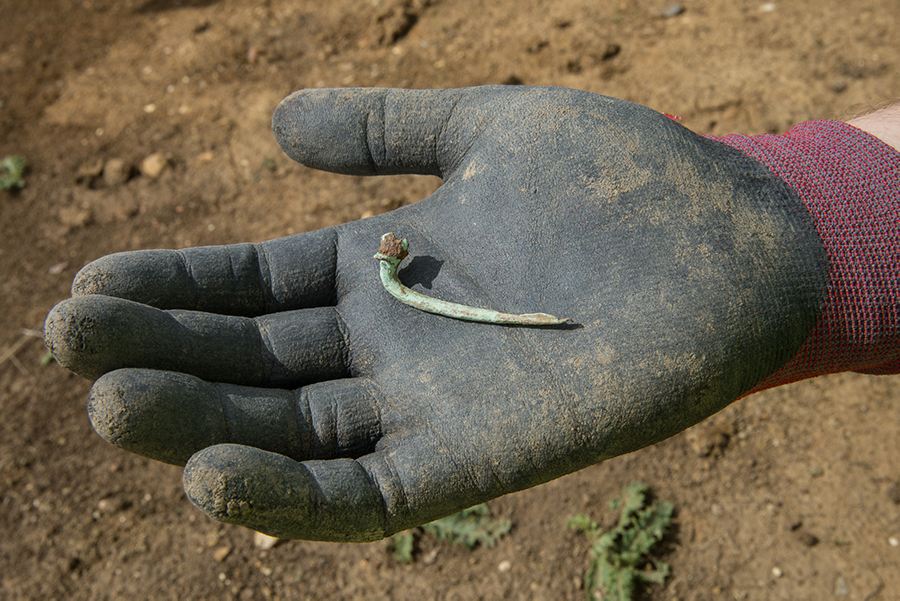 And this fragment of a beautifully-decorated Anglo-Saxon copper-alloy brooch:
And this fragment of a beautifully-decorated Anglo-Saxon copper-alloy brooch:
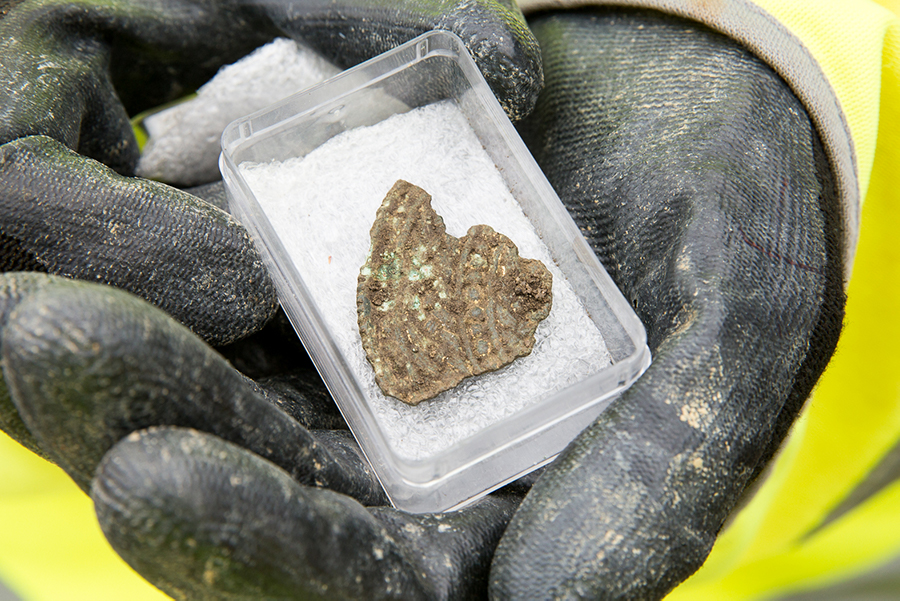 If you look closely, you will see tiny flecks of gold, which may once have coated the entire surface.
If you look closely, you will see tiny flecks of gold, which may once have coated the entire surface.
Other finds haven’t been quite so easy to identify. This enigmatic object was found by volunteer Jack – who is studying archaeology at Exeter University – on the medieval trackway which runs through the site. Our experts think it could be a stone pendant, but we cannot be sure. Jack said of his mysterious find:
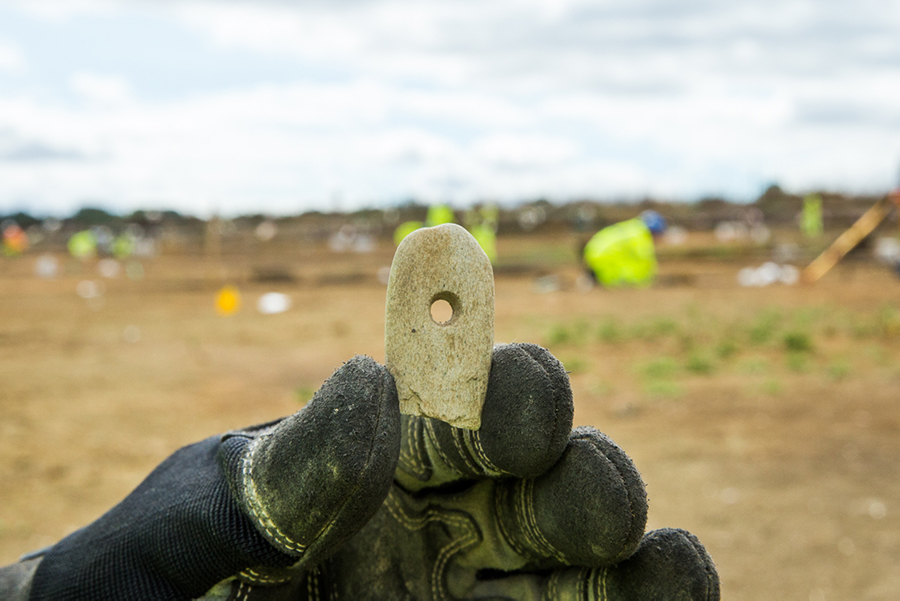
“I particularly like the way the object is so well-made, with the perfect hole in the centre”.
Join us on our journey!
- @A14C2H #A14Archaeology
- Facebook.com/A14C2H/ #A14Archaeology
- Come to one of our community archaeology events
- Find out more about the A14C2H improvement scheme here
The archaeological programme for the Cambridge to Huntingdon improvement scheme is being carried out by A14 Integrated Delivery Team on behalf of Highways England.
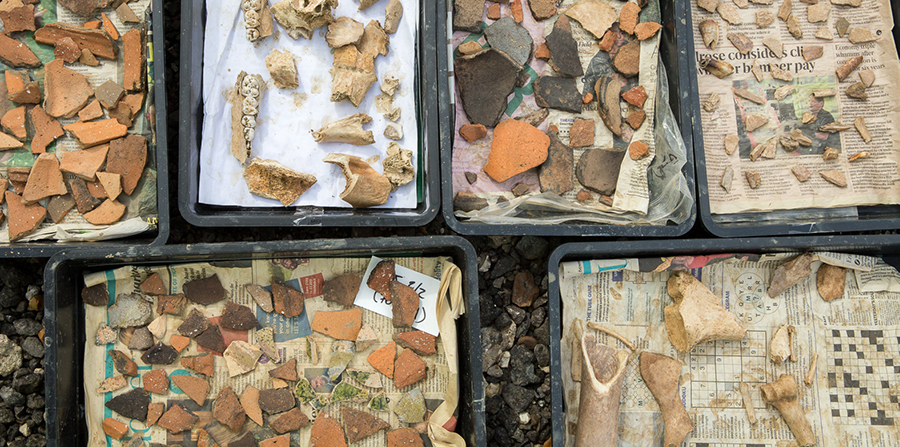
0 Comments
Leave A Comment